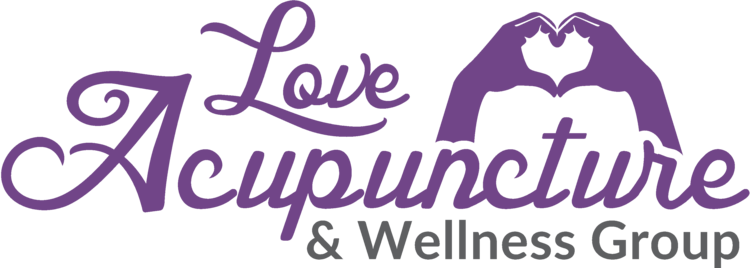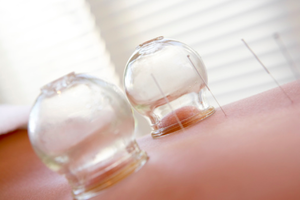Acupuncture, cupping, moxibustion, and herbal medicine are just some of the tools in our tool kit to help get you back to 100% following a work injury or accident.
Acupuncture for Rehabilitation After a Work Injury or Accident
When you’re hurt at work, you may open up a workers compensation claim. If you do, your physician may recommend acupuncture as a part of your treatment plan. Acupuncture can be beneficial for many different kinds of injuries you may sustain during a workplace accident, including pain, stiffness, and other symptoms that are a result of those injuries.
Workers injured on the job may experience pain, often in their shoulders, backs, and necks, as well as headaches and migraines, whiplash, or other kinds of strains. Someone may even break a bone as a result of a workplace accident.
Research supports acupuncture’s abilities to treat these conditions and more. Read further to understand how acupuncture may help or why it may be recommended by your physician as a part of your treatment following your workplace accident. You can also click here for information about scheduling & insurance under a workers compensation claim.
Back Pain
Research overwhelming supports acupuncture’s ability to relieve back pain, especially chronic low back pain. One study, reported on by AARP, found that 60% of patients who received acupuncture for low back pain reported a significant improvement, compared to the 39% of folks who reported improvement without acupuncture treatment.
Another study performed by Kaiser Permanente researchers found that “acupuncture was more effective than usual care alone for helping people with chronic low back pain feel less bothered by their symptoms and function better in their daily activities.”
Yet another study reported that, “…acupuncture, either used in isolation or as an adjunct to other interventions, has been demonstrated as an effective clinical option for patients with chronic LBP [low back pain] and should be advocated in routing clinical practice.”
Acupuncture, electro acupuncture, cupping, and other East Asian medicine modalities often help alleviate or resolve low back pain, especially when the result of an injury due to a workplace accident.
Headaches & Migraines
Acupuncture can offer relief from headaches and migraines without the dependence on pharmaceuticals that are so often prescribed for these conditions. Studies have found increasingly consistent evidence that acupuncture can treat migraines and headaches with clinically significant efficacy.
One 2020 study found that, “Compared with medication, acupuncture therapy is relatively low-cost and has fewer side effects…” than medications and goes on to report, “…acupuncture demonstrably attenuates and prevents migraine.”
Another study that included almost 5,000 participants found that after acupuncture, “…headache frequency at least halved in 41% of participants receiving acupuncture.”
The efficacy of acupuncture in treating headaches and migraines was perhaps best summed up in an article from Dr. Albrecht Molsberger. He states, “On the basis of the existing evidence, acupuncture should be an option for the first-line treatment of migraine to supplement other non-pharmacologic treatment options. It is at least as effective as prophylactic drug therapy, has longer lasting effects, is safe, seems to be cost-effective and reduces drug intake with possibly severe unwanted effects.”
Neck Pain & Whiplash
Neck pain, strains, sprains, and whiplash are common following workplace accidents and injuries. Acupuncture can be a safe and incredibly effective treatment for these conditions.
In a 2015 study, researchers found that 70% of participants reported short-term relief from neck pain following a full course of acupuncture treatment, whereas only 40% of participants reported similar relief using pain medication.
That same study reported that in the long-term, 87% of participants treated with acupuncture found long-lasting pain and symptom relief compared with only 68% of participants treated with medication.
Another study, reported on by NPR, found that after three months of treatment, people with chronic neck pain reported 10% less pain than folks who hadn’t received that kind of care.
In Summary
Acupuncture can be a natural and effective addition to your treatment following a workplace injury or accident. Your physician may recommend acupuncture, and you are also welcome to ask your doctor to refer you for acupuncture services for additional treatment.
Whether you suffer from back pain, headaches and migraines, neck pain and whiplash, or another condition—such as a broken bone, dizziness, blurred vision, and more—acupuncture could help you get back on your feet and back to work following your injury.
Getting treatment as soon as you’re able following a work injury is important. Doing so can help prevent something seemingly minor from escalating into a chronic and hard-to-treat condition down the road.
All our providers at Love Acupuncture & Wellness accept folks who are seeking acupuncture or massage therapy treatment under a workers compensation claim. Click here for more information on scheduling and insurance under a workers compensation claim.
If you are in need of acute care, we can help get you in fast! Open six days a week in Clackamas, Oregon.
For Further Reading:
“Acupuncture and Alexander Technique Can Help Chronic Neck Pain,” NPR; Angus Chen, 2015.
“Acupuncture for Lower-Back Pain: Really?” AARP; Sandra Lamb, 2020.
“Acupuncture Relieves Neck Pain and Numbness,” Healthcare Medicine Institute, 2015.

